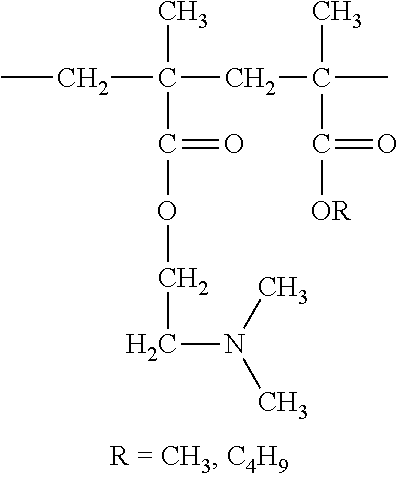Delivery and Controlled Release of Encapsulated Lipophilic Nutrients
a technology of lipophilic nutrients and encapsulated lipophilic nutrients, which is applied in the direction of dispersed delivery, drug compositions, food shaping, etc., can solve the problems of negative hedonistic changes to food or beverage products, commercially available fish oils have not proven physically or taste-stable in acidic food and beverage products, and do not provide any additional benefits like controlled (triggered) release or extended protection against hydrolysis and oxidation. , to achieve the effect of enhancing bio
- Summary
- Abstract
- Description
- Claims
- Application Information
AI Technical Summary
Benefits of technology
Problems solved by technology
Method used
Image
Examples
example 1
[0030]A complex coacervate delivery system was prepared using the following methods. A 25 mL aqueous solution of 2% by weight gum acacia was prepared. Fish oil high in omega-3 fatty acid (1.3 mL) was added to the 25 mL gum acacia solution. The mixture was sonicated for two minutes, alternating pulsing on for 1 second and off for 1 second, to form an oil-in-water emulsion. Then, a 100 mL aqueous solution of 2% by weight gelatin type A pre-heated to 50° C. was added slowly to the emulsion while stirring the mixture at 500 rpm. Maintaining the temperature at 50° C., the pH was lowered to between 4.8 and 5.0 using 0.1 M phosphoric acid. Then the mixture was cooled in an ice bath. Once the temperature reached 5-10° C., the pH was lowered to between 4.0 to 4.5 using another portion of 0.1 M phosphoric acid to allow formation of coacervate complexes of cationic gelatin and anionic gum acacia encapsulating droplets of fish oil. Particle size of the complex coacervates was about 2.0 to about...
example 2
[0032]Fish oil high in omega-3 fatty acid (1.3 mL) was added to 25 mL aqueous solution of 0.4% by weight modified starch containing 0.83% polyvinyl alcohol, of which pH was pre-adjusted to 2.6 using citrate buffer. The mixture was sonicated for two minutes in the same manner as described in Example 1. Then, a 5 mL aqueous solution of 0.5% by weight whey protein (pH 2.6 in 10 mM citrate buffer) was added to the mixture and further sonicated for another 30 seconds. Particle size of thus formed complex coacervates was about 0.5-1 μm.
[0033]It should be noted that the modified starch in Example 2 could be replaced wholly or partly with gum acacia and / or other anionic polymers. The whey protein in Example 2 could be replaced wholly or in part with chitosan, gelatin, and / or other cationic polymers. The polyvinyl alcohol in Example 2 could be replaced wholly or partly with modified starch, polyethylene glycol, maltodextrin DE5, guar gum, and / or hydroxypropylmethylcellulose (HPMC). Also, it ...
example 3
[0035]The amount of encapsulated oil produced in Example 2 was estimated by subtracting unencapsulated oil from total oil in the system. For extracting unencapsulated free oil, the particle suspension was mixed with hexane at 1:1 ratio and spun at 14,000 rpm for 15 minutes. The hexane layer was then collected and analyzed as described in Examples 4 and 5. Total oil in the system (encapsulated oil and unencapsulated free oil) was extracted as follows. Particle suspension was brought to pH 6.7-6.8 using 1N NaOH solution and heated to 50° C. to dissolve the coacervate coats surrounding oil droplets. The suspension was mixed with hexane at 1:1 ratio and spun at 14,000 rpm for 15 minutes. The hexane layer was then collected and analyzed as described in Examples 4 and 5.
PUM
 Login to View More
Login to View More Abstract
Description
Claims
Application Information
 Login to View More
Login to View More - R&D
- Intellectual Property
- Life Sciences
- Materials
- Tech Scout
- Unparalleled Data Quality
- Higher Quality Content
- 60% Fewer Hallucinations
Browse by: Latest US Patents, China's latest patents, Technical Efficacy Thesaurus, Application Domain, Technology Topic, Popular Technical Reports.
© 2025 PatSnap. All rights reserved.Legal|Privacy policy|Modern Slavery Act Transparency Statement|Sitemap|About US| Contact US: help@patsnap.com

